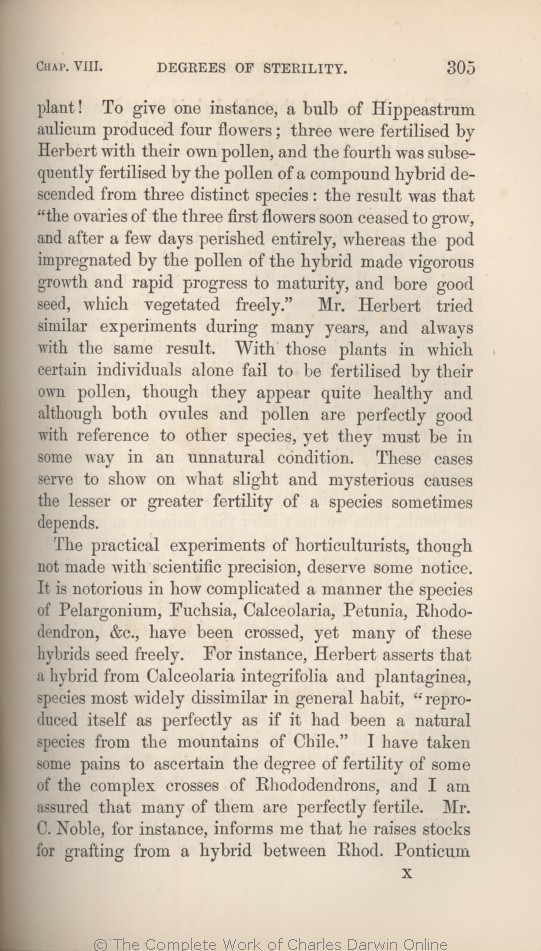To give one | To give one 1869 1872 |
| For 1859 1860 1861 |
| produced 1859 1860 1861 1869 | | pro- duced 1872 |
| ..... 1869 1872 | | other and 1859 1860 1861 |
| species: 1859 1861 1869 1872 | | spe- cies: 1860 |
| 4 blocks not present in 1869 1872; present in 1859 1860 1861 1866 | | In a letter to me,
in 1839, Mr. Herbert told me that he had then tried the experiment during five years, and he continued to try it during several subsequent years, and always with the same result.
This result has, also, been confirmed by other observers in the case of Hippeastrum with its sub-genera,
and in the case of some other genera, as Lobelia, Passiflora
and Verbascum.
Although the plants in these experiments appeared perfectly healthy, and although both the ovules and pollen of the same flower were perfectly good with respect to other species, yet
as they were functionally imperfect in their mutual self-action, we must infer that the plants were in an unnatural state.
Nevertheless these facts show on what slight and mysterious causes the lesser or greater fertility of species when crossed, in comparison with the same species when self-fertilised, sometimes depends.
|
|
|
The practical experiments of horticulturists, though not made with scientific precision, deserve some notice. It is notorious in how complicated a manner the species of Pelargonium, Fuchsia, Calceolaria, Petunia, Rhododendron, &c., have been crossed, yet many of these hybrids seed freely. For instance, Herbert asserts that a hybrid from Calceolaria integrifolia and plantaginea, species most widely dissimilar in general habit,
"reproduced | "reproduced 1859 1860 1861 1866 1869 | | "reproduces 1872 |
| Chile." 1859 1860 1861 1866 1869 | | Chili." 1872 |
| Ponticum 1859 1860 1861 1866 1869 | | ponticum 1872 |
|









